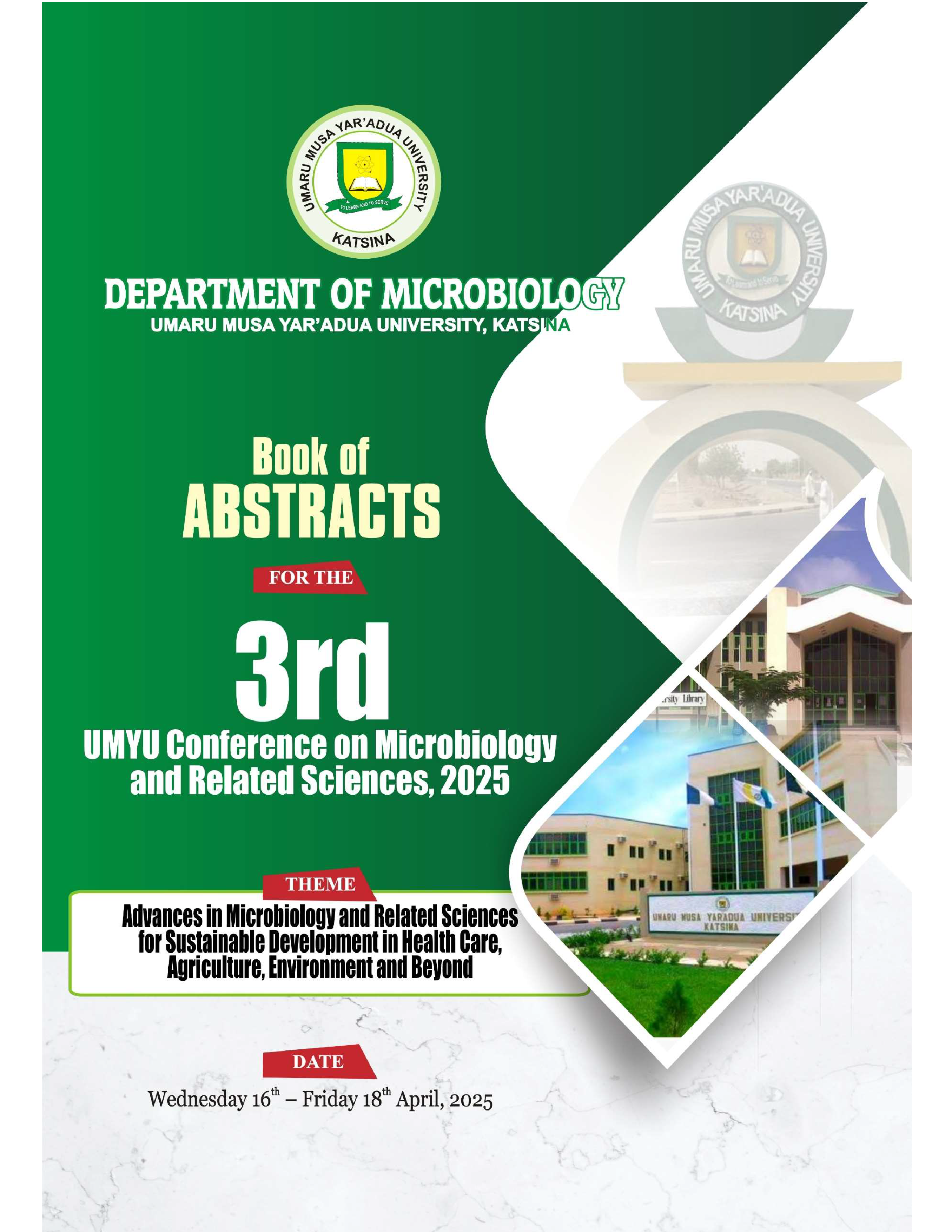Bacteria Producing Biosurfactants from Spent Lubricating Oil Polluted Soil
Abstract
Biosurfactants are surface-active compounds produced either extracellularly or as part of the cell membrane by various microorganisms, including bacteria, yeasts, and fungi. These structurally diverse molecules reduce surface and interfacial tension in both aqueous solutions and hydrocarbon mixtures, making them valuable in applications such as enhanced oil recovery and bioremediation. This study focused on isolating and identifying biosurfactant-producing bacteria from soil contaminated with spent lubricating oil. Soil samples were collected from polluted sites and analyzed for physicochemical parameters and bacterial enumeration, isolation and identification. The physicochemical analysis of the spent lubricating oil-polluted soil revealed significant variations in parameters such as pH (6.97), moisture content (3.7%), electrical conductivity (1.22 μS/cm), and temperature (26.2°C). The organic matter content (1.2%) and soil texture (2.46% clay, 7.7% silt, 89.78% sand) classified the soil as sandy loam. Heavy metal analysis showed elevated concentrations of Fe (250.5 ppm), Pb (5.2 ppm), Zn (3.6 ppm), and Ni (0.6 ppm), which were statistically significant (p ≤ 0.05) compared to control (non-polluted) soil samples. Microbial enumeration indicated a statistically significant difference in bacterial load across different isolates. Crude oil-degrading bacterial counts ranged from 1.02 × 10⁶ to 1.9 × 10⁶ cfu/g, while total aerobic counts ranged from 1.18 × 10⁴ to 2.0 × 10⁴ cfu/g (p ≤ 0.05). Among the isolates, Pseudomonas spp. showed the highest frequency of occurrence (40%), followed by Staphylococcus aureus (30%) and Escherichia coli (30%), with their distribution showing statistically significant variation (p ≤ 0.05). These findings confirm that the polluted soil environment selectively favors the proliferation of biosurfactant-producing bacteria, with Pseudomonas spp. being the most dominant. The association between soil physicochemical properties, heavy metal concentrations, and bacterial distribution was also found to be statistically significant, supporting the role of these organisms in bioremediation processes. Further research is recommended to optimize the conditions for biosurfactant production and to explore their full environmental and industrial potential.
Published
How to Cite
Issue
Section
License
Copyright (c) 2025 UMYU Conference of Microbiology and Related Sciences

This work is licensed under a Creative Commons Attribution-NonCommercial 4.0 International License.


